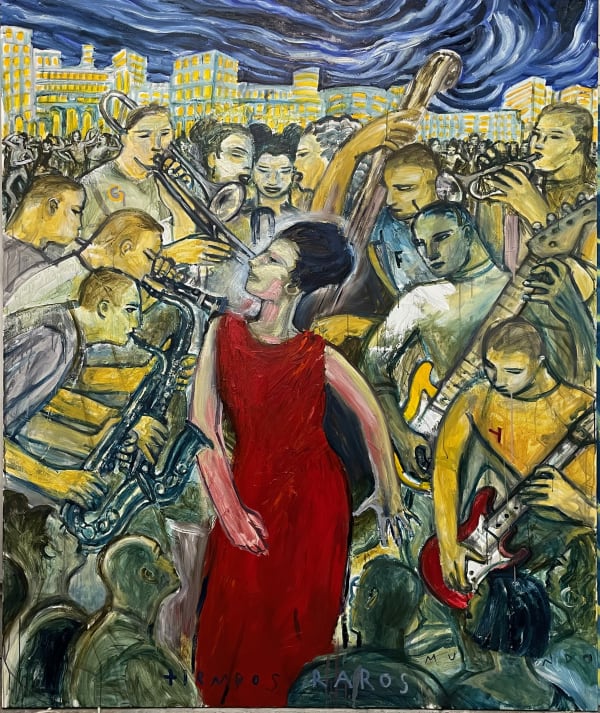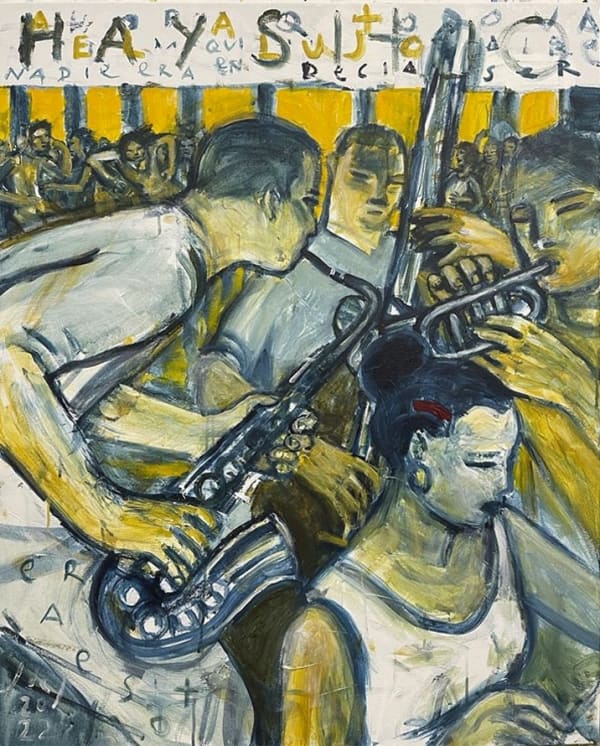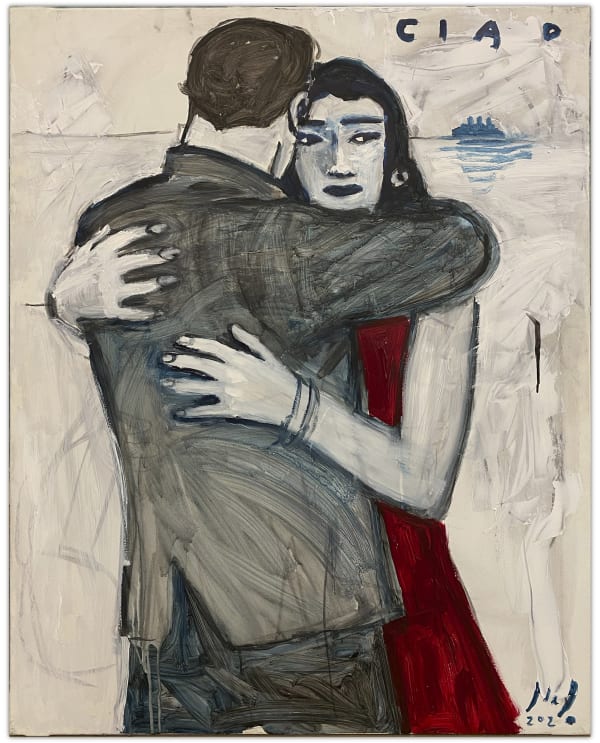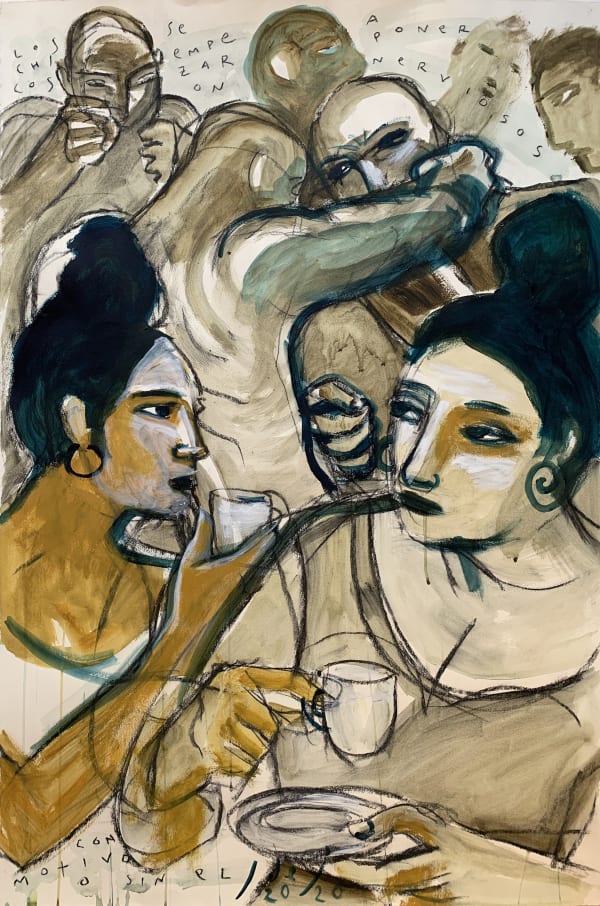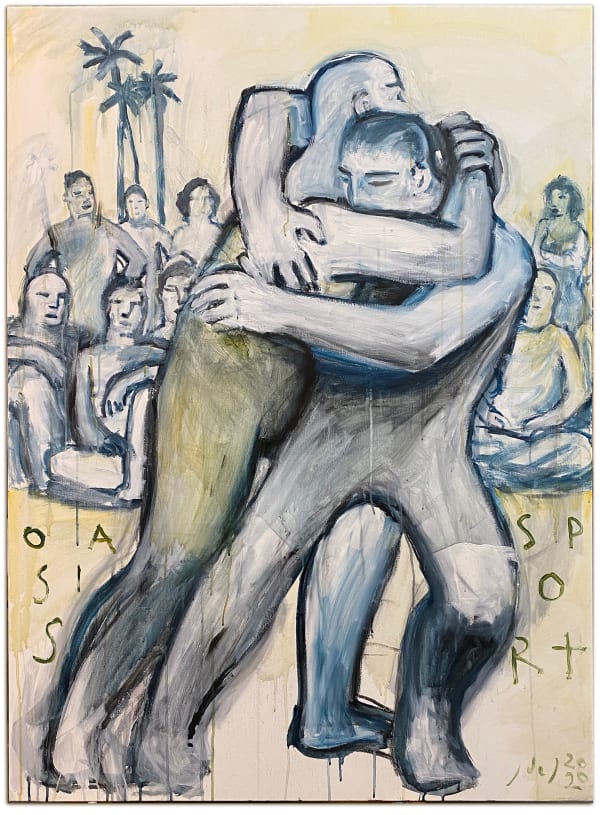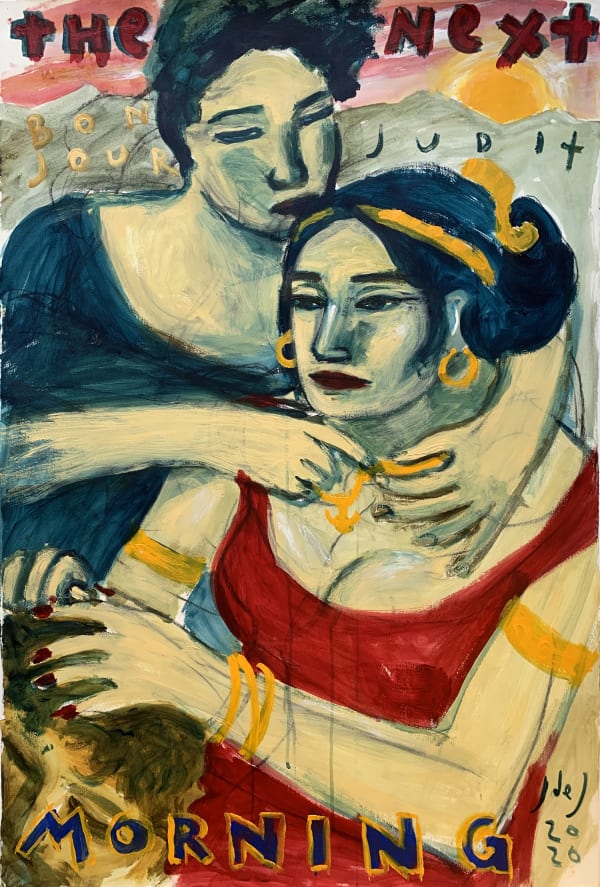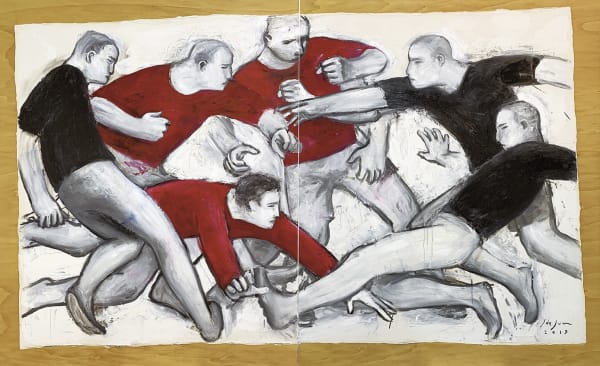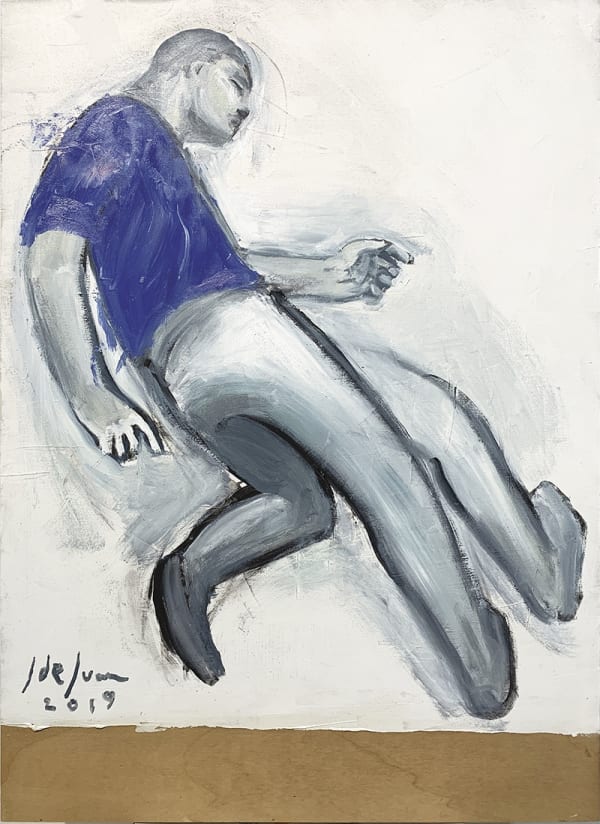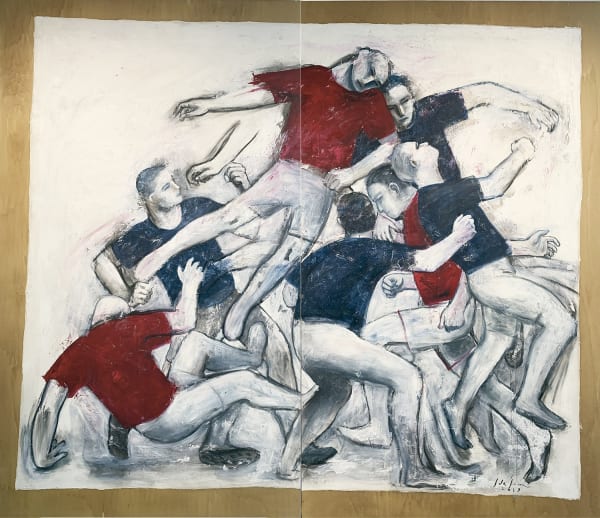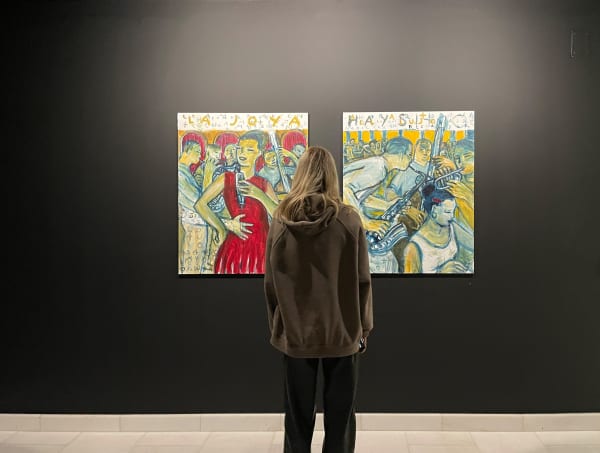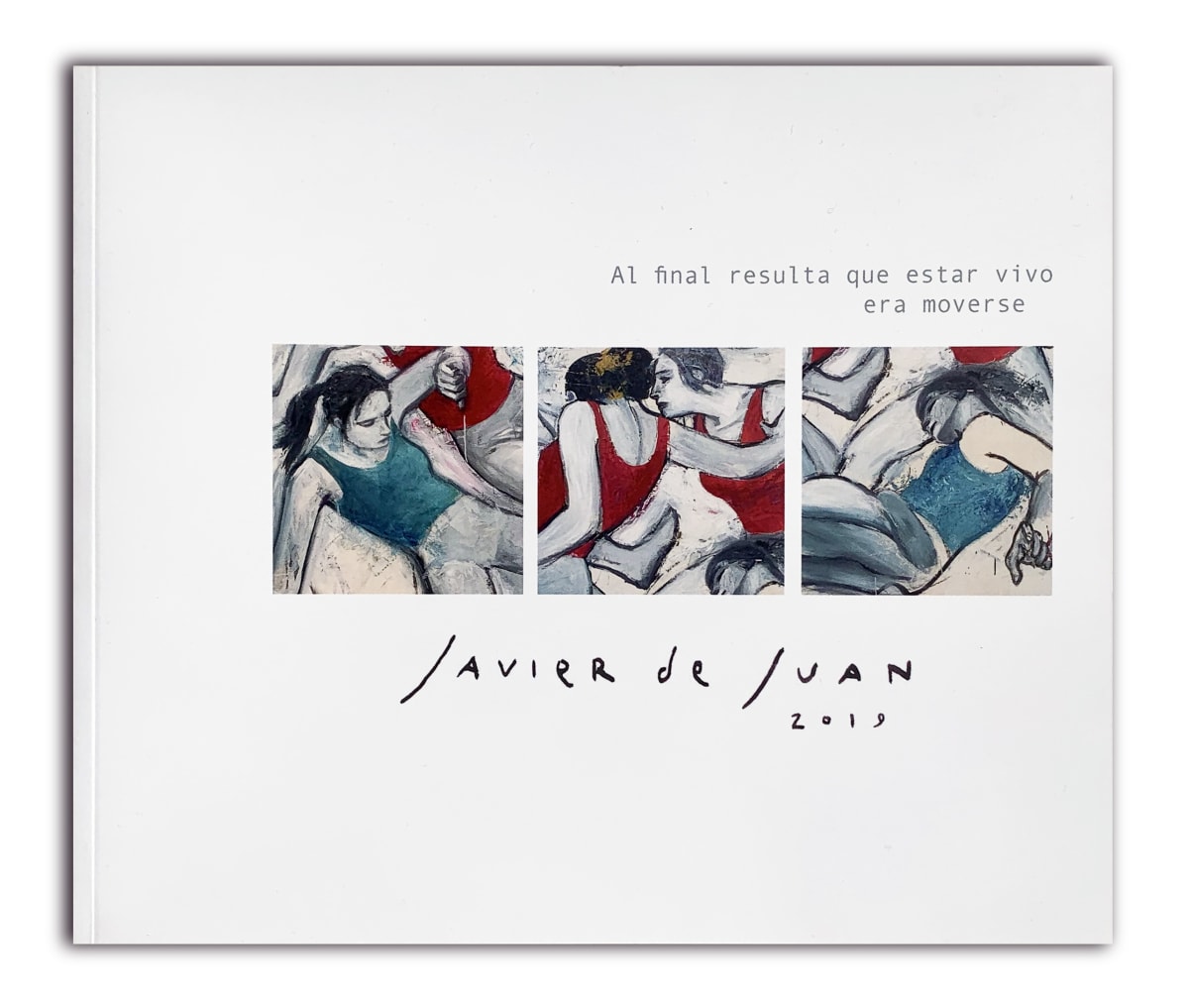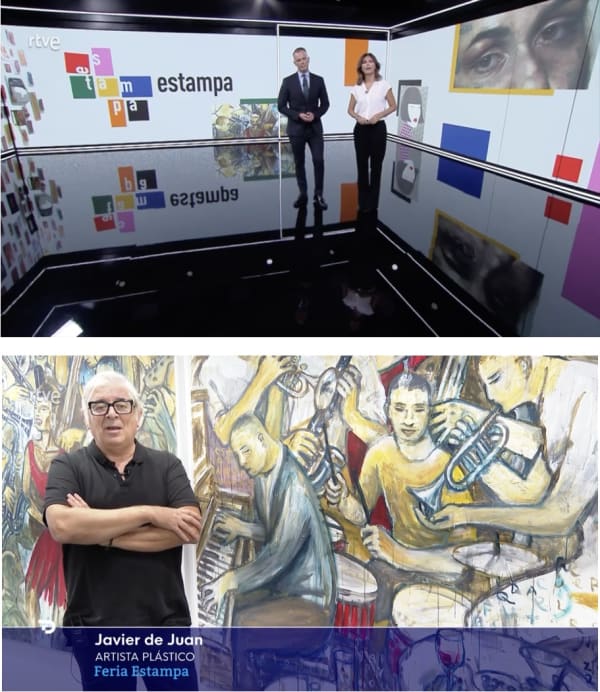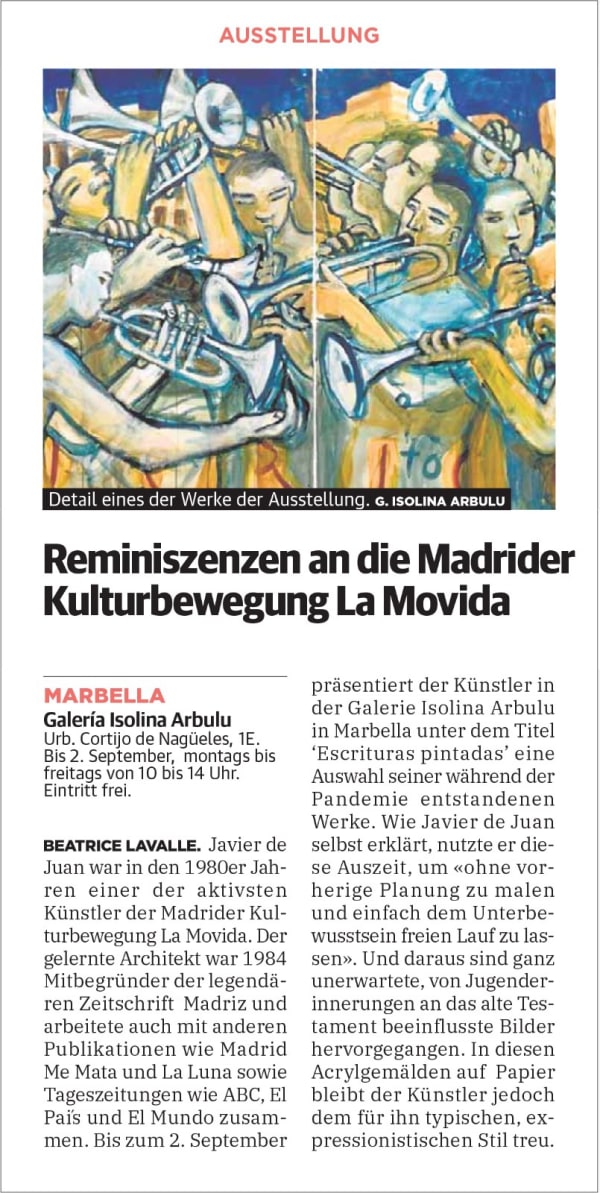His painting is movement, an unmistakable icon of the cultural revolution that was born in the Spanish capital in those wonderful 80s: Chenel, Tierno, 'Madriz', music and comics, the night and life.
His studies at the School of Architecture were to leave an unquestionable mark on his works, largely centred on urban themes, reflecting different aspects of the city, its buildings and streets, its dynamism, and above all the different archetypes and human genealogies that inhabit and populate his compositions.
Over the years, although his aesthetic, stylistic and expressive interests have logically evolved, being always very interested in the dissemination of his images through serial work, and even for some time now in the use of new languages and creative strategies, including video and digital processes, the fact is that a series of formal and conceptual features exist and are maintained in him that define and give meaning to his own voice as an artist.
Javier de Juan is above all a splendid draughtsman with an innate ability to tell stories through images. His technique is fresh, agile, clear and simple. With few lines and graphics he is capable of constructing scenes, situations, moments and, of course, emotions. His characters, men and women, are always recognisable and are animated by a special liveliness, full of energy, registers, movements and also sensuality.
Despite the fact that in his pieces the line and the graphics have their own voice that can be heard clearly, the truth is that Javier is an artist who manages to make the chromatic registers also present their candidature as important elements in his work. Colours with a marked warm texture, oranges, yellows, reds, which in turn are tempered and modulated with other shades closer to the cold kingdom of blues and greens.
He is an artist whose imaginary is nourished and supplied to a large extent by the fauna and flora that populate the diverse and variegated environment of the city. The streets, the cars, the passers-by, the illuminated signs, the buildings form a dynamic totuum revolutum and compose before our eyes an active and energetic urban song.
An artist who generates narratives and visual stories full of inventiveness and winks can never be without the warp and weft of the imaginative. Images yes, but undoubtedly images that are the offspring of his fertile imagination.
-
 Javier de JuanEl amor ausente, 2022Oil on canvas100 x 80View more details
Javier de JuanEl amor ausente, 2022Oil on canvas100 x 80View more details -
 Javier de JuanLeave us alone, 2022/23Oil on canvas195 x 165View more details
Javier de JuanLeave us alone, 2022/23Oil on canvas195 x 165View more details -
 Javier de JuanStrange times, 2023Oil on canvas200 x 200View more details
Javier de JuanStrange times, 2023Oil on canvas200 x 200View more details -
 Javier de JuanNadie era quien decía ser, 2022Oil on canvas100 x 80View more details
Javier de JuanNadie era quien decía ser, 2022Oil on canvas100 x 80View more details -
 Javier de JuanRecuerda que el futuro es el recuerdo, 2022Oil on canvas195 x 165View more details
Javier de JuanRecuerda que el futuro es el recuerdo, 2022Oil on canvas195 x 165View more details -
 Javier de JuanJerico, 2021Acrylic on paper112 x 152 cm
Javier de JuanJerico, 2021Acrylic on paper112 x 152 cm
DiptychView more details -
 Javier de JuanJerico Now, 2021Acrylic on paper100 x 145 cm
Javier de JuanJerico Now, 2021Acrylic on paper100 x 145 cm
DiptychView more details -
 Javier de JuanSusanna, 2021Acrylic on Super alpha paper Guarro 250g112 x 76 cmView more details
Javier de JuanSusanna, 2021Acrylic on Super alpha paper Guarro 250g112 x 76 cmView more details -
 Javier de JuanPaso negro 1, 2022Acrylic on Super alpha paper Guarro 250g112 x 76 cmView more details
Javier de JuanPaso negro 1, 2022Acrylic on Super alpha paper Guarro 250g112 x 76 cmView more details -
 Javier de JuanPaso rojo 1, 2022Acrylic on Super alpha paper Guarro 250g112 x 76 cmView more details
Javier de JuanPaso rojo 1, 2022Acrylic on Super alpha paper Guarro 250g112 x 76 cmView more details -
 Javier de JuanPaso rojo 3, 2022Acrylic on Super alpha paper Guarro 250g112 x 76 cmView more details
Javier de JuanPaso rojo 3, 2022Acrylic on Super alpha paper Guarro 250g112 x 76 cmView more details -
 Javier de JuanUna conversación larga, 2021Acrylic on paper112 x 76 cmView more details
Javier de JuanUna conversación larga, 2021Acrylic on paper112 x 76 cmView more details -
 Javier de JuanBon Soir, 2020Acrilic on wood122 x 60 cmsView more details
Javier de JuanBon Soir, 2020Acrilic on wood122 x 60 cmsView more details -
 Javier de JuanCiao, 2020Acrilic on canvas100 x 73 cmsView more details
Javier de JuanCiao, 2020Acrilic on canvas100 x 73 cmsView more details -
 Javier de JuanJacobo y Ángel, 2020Acrylic on paper Super alfa Guarro 250g112 x 75 cmView more details
Javier de JuanJacobo y Ángel, 2020Acrylic on paper Super alfa Guarro 250g112 x 75 cmView more details -
 Javier de JuanNerviosos, 2020Acrylic on super alpha paper Guarro 250g112 x 76 cmView more details
Javier de JuanNerviosos, 2020Acrylic on super alpha paper Guarro 250g112 x 76 cmView more details -
 Javier de JuanOasis Sport, 2020Acrilic on canvas130 x 97 cmsView more details
Javier de JuanOasis Sport, 2020Acrilic on canvas130 x 97 cmsView more details -
 Javier de JuanSporting life, 2020Acrylic on paper Super alfa Guarro 250g112 x 76 cmView more details
Javier de JuanSporting life, 2020Acrylic on paper Super alfa Guarro 250g112 x 76 cmView more details -
 Javier de JuanThe golden cow, 2020Acrylic on paper112 x 76 cmView more details
Javier de JuanThe golden cow, 2020Acrylic on paper112 x 76 cmView more details -
 Javier de JuanThe next morning, 2020Acrylic on super alpha paper Guarro 250g112 x 76 cmView more details
Javier de JuanThe next morning, 2020Acrylic on super alpha paper Guarro 250g112 x 76 cmView more details -
 Javier de JuanAmazonas, 2019Oil on wood122 x 200View more details
Javier de JuanAmazonas, 2019Oil on wood122 x 200View more details -
 Javier de JuanAtenienses y Espartanos, 2019Oil on wood122 x 200View more details
Javier de JuanAtenienses y Espartanos, 2019Oil on wood122 x 200View more details -
 Javier de JuanFigure 4, 2019Oil on wood61 x 44View more details
Javier de JuanFigure 4, 2019Oil on wood61 x 44View more details -
 Javier de JuanHector y Ajax, 2019Oil on wood122 x 110View more details
Javier de JuanHector y Ajax, 2019Oil on wood122 x 110View more details -
 Javier de JuanLa fuerza, 2019Oil on wood220 x 244
Javier de JuanLa fuerza, 2019Oil on wood220 x 244
DipticView more details -
 Javier de JuanNinfas Amnisiades, 2019Oil on wood122 x 110View more details
Javier de JuanNinfas Amnisiades, 2019Oil on wood122 x 110View more details -
 Javier de JuanWalk like an egiptian, 2019Oil on wood61 x 44View more details
Javier de JuanWalk like an egiptian, 2019Oil on wood61 x 44View more details -
 Javier de JuanVoy, 2017Oil on canvas100 x 73 cmView more details
Javier de JuanVoy, 2017Oil on canvas100 x 73 cmView more details
Spanish artist, an outstanding figure in relation to the plastic image of the Madrid movida (movida madrileña) and the new figuration of the eighties in Spain.
Javier de Juan is a Spanish artist born in Linares, Jaén, on 13 September 1958. His work and artistic career span several decades and are characterised by his participation in the artistic scene of the movida madrileña and the new figuration in the eighties, as well as by his evolution towards a more intimate and reflective approach in the nineties. Throughout his career, he has worked as a painter, draughtsman, engraver, muralist and digital artist. He has also dabbled in writing, graphic design and animated film.
In the 1980s, he was considered an urban artist and a painter of the Spanish New Figuration, with works that reflected the urban life of the Movida era in Madrid. He also participated in important magazines of the time and founded Port Said Ediciones, a publishing house specialising in artists' posters. In the late 1980s, he moved to Morocco and then to New York, which influenced his work and artistic style. In the 1990s, his work became more introspective and symbolic, with a focus on large-format works that evoke timeless, mixed-race worlds. In the 2000s, he experimented with new media, installations and three-dimensional works. He also ventured into animated film. In the 2010s, he began working with video projections and digital technologies, combining analogue and digital in his work.
Javier de Juan has received awards and distinctions throughout his career, such as the National Printmaking Award in 1995 and the Pop Eye Award for his career in the visual arts in 2017. His work can be found in various collections and museums, including the Museo Nacional Centro de Arte Reina Sofía and the Fundación Telefónica. He has also published several books and has participated in multidisciplinary projects in the field of visual arts. His work encompasses a wide range of approaches over the years, always with a recognisable style of his own, reflecting his evolution as an artist over time.
-

Out and about
Javier de Juan - Black room 4 Nov - 22 Dec 2023The works presented here are a sample of the work developed by the artist Javier de Juan in recent years. It is an observation of our movement as urban beings,...Read more -

Here's looking at you
Group exhibit - Black room 17 Feb - 17 Mar 2023The famous phrase 'Here's looking at you, Kid' from Casablanca is a toast, Americans have been using it since the 20th century, even long before the film. Although there is...Read more -

Painted Scriptures
Javier de Juan 17 Jun - 2 Sep 2022The work that Javier de Juan produced during the lockdown of 2020. Eighteen acrylic paintings on paper in which the artist, in an exercise of freedom and delving into the...Read more -

In the end it turns out that being alive was about moving
Javier de Juan 7 Jun - 6 Sep 2019Juan's recent work sometimes evokes classical paintings, from the collective imagination, epic battles that could pass for rugby matches, struggles of modern man converted into this irrelevant circular game, stripped...Read more
Public collections:
Museo ABC, Madrid /Museo Insular de La Palma / Geneve Hotel de Ville Collection, Switzerland. /Museo Nacional de Arte Contemporáneo, Sevilla, Spain / Lindner Foundation, Dusseldorf, Germany / Museo de Arte Contemporaneo Conde Duque, Madrid, Spain / Museo del Grabado. Marbella, Málaga, Spain / Fundación Telefónica, Spain /Círculo de Bellas Artes, Madrid, Spain / Banco de España, Madrid, Spain / Biblioteca Nacional, Madrid, Spain /Fundación Argentaria, Madrid, Spain / Fundación La Caixa, Barcelona, Spain / Fundación Tabacalera, Madrid, Spain / Euroforum, El Escorial, Madrid, Spain / Calcografía Nacional, Madrid, Spain / Fundación Juan March, Madrid, Spain / Teatro Real, Madrid, Spain / Fundación Aena, Madrid, Spain / Ayuntamiento de Los Llanos de Aridane, La Palma, Spain
-

Diario Sur
Javier de Juan interviene en el Centre PompidouFebruary 23, 2024 -

Javier de Juan en RTVE - Estampa 2022
RTVE -

Javier de Juan - Escrituras
Sur Deutsche
-
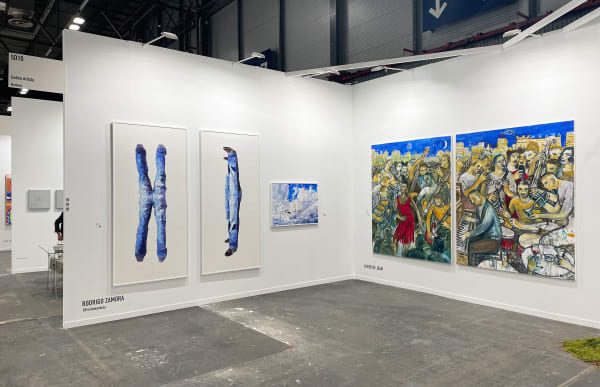
Estampa - Madrid
Javier de Juan, Rodrigo Zamora, Lola Guerrera 13 - 16 Oct 2022We understand the world through fragments, small details and gestures that give meaning to the whole. Our existence can only be understood through the everyday,...Read more -
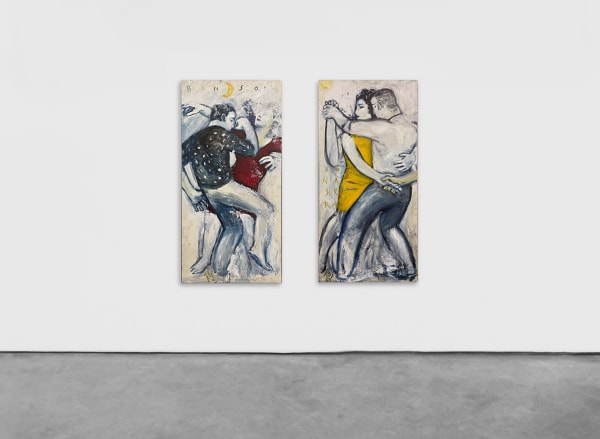
Urvanity - On line
Javier de Juan 25 - 28 Feb 2021URVANITY SOLO SHOWS 2021 Because Art never sleeps, Urvanity presents Solo Shows 2021 in Plataforma Digital to discover the best New Contemporary Art. Urvanity Art...Read more -
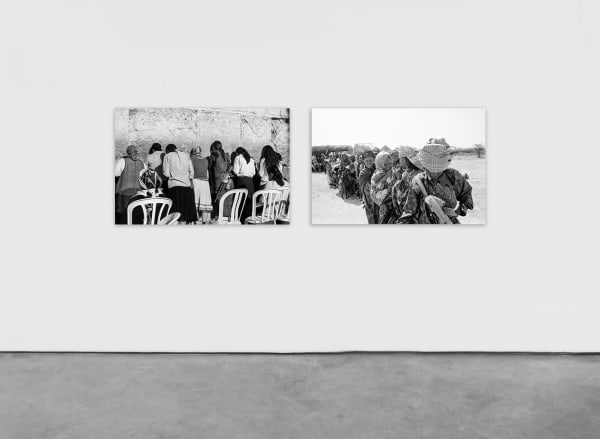
La distinción - On line
Javier de Juan, Angélica Arbulu, Gala Fernandez 19 Dec 2020 - 20 Jan 2021The purchase of a work of art is the expenditure of affirmation of those who know how to give a price to things that do...Read more



